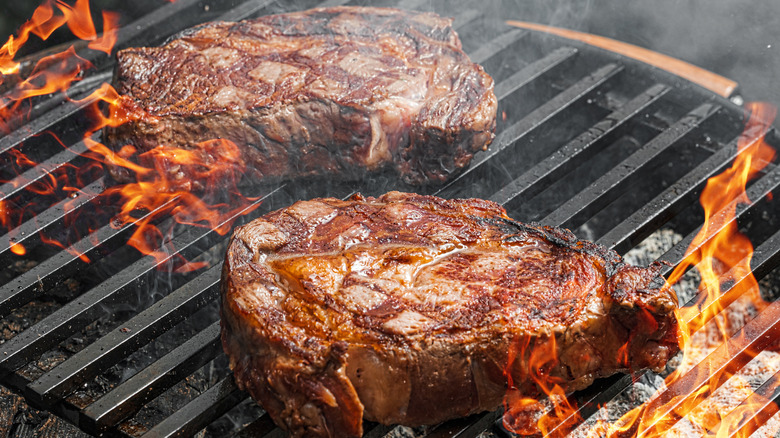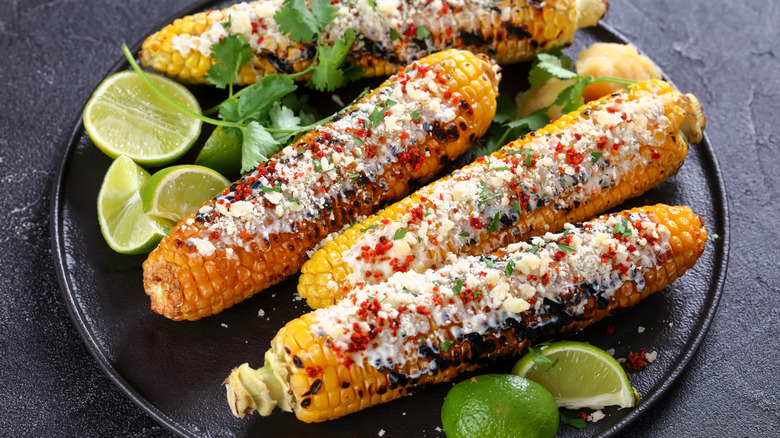The Subtle Difference Between Burning And Charring Food
Many food experts will be happy to share their best tips for getting the perfect sear or the perfect char on a steak or other food. The flavor that a good char can produce is phenomenal, but there are plenty of ways to screw things up. So, how can you tell the difference between getting that perfect char and just burning your food instead?
Charring food is practically an art form. The food has to go past the Maillard reaction without turning into a burnt brick (via Master Class). It can be tricky to nail down, but it imparts a unique flavor onto most foods that capture the complexity of caramelization and add a smoky quality.
According to culinary scientist Jessica Gavin, The Maillard reaction is a series of chemical reactions that often occur at high heat to create immense amounts of flavor. Caramelized foods are often the result of these reactions. It gives your bread a crisp brown exterior, your chicken a rich, crispy skin, and creme Brule a crackling caramel crust. The reaction is also moisture dependent, which is why you need to salt and dry your steak before putting it on the grill. Going a step beyond this process is when food is considered charred.
Charring adds complexity and richness to most foods
According to Master Class, charring is the next stage of cooking, which retains much of the complexity of caramelized foods, but adds a deep smokiness. However, going beyond a char is when your food is considered burnt. It's a fine line between the two.
Bon Appétit notes that food that reaches the burnt stage has become carbonized and inedible. Any complexity developed during the other stages of cooking is no longer present, and burnt food will instead leave an acrid, bitter taste in your mouth. Bon Appétit points out that charring is burning your food — but only slightly. Charring allows some of those deeper flavors that are present just past caramelization to come through without overwhelming the other qualities of the food. The key is to control the burn.
Bon Appétit notes that high sugar foods like sweet potatoes and corn excel with char because those bitter compounds complement the flavors and add more complexity to the dish. Grilled peaches are another excellent example of a food that sings when it has just a slight char, thanks to the high sugar content.

